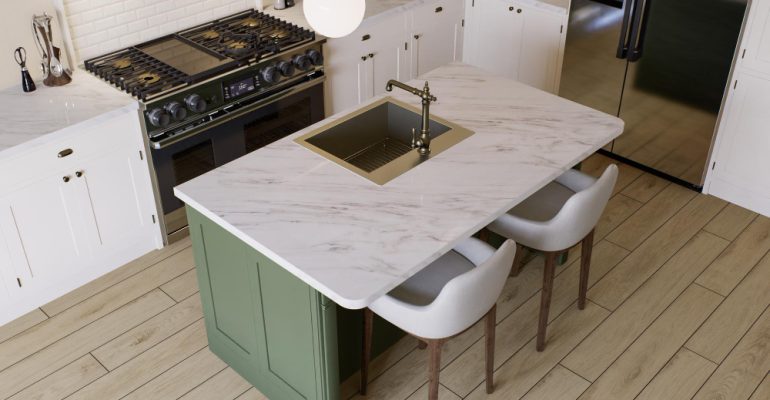A well designed kitchen island serves as the centrepiece of your kitchen, it’s a gathering place for family activities, casual meals and culinary creativity. Crafting the ideal kitchen island requires careful consideration of functionality, aesthetics, and practicality. To help you get it just right, let’s explore the key elements that will make your kitchen island both stunning and highly practical.
Purpose and Functionality First
Before diving into aesthetics, determine the primary purpose of your kitchen island. Is it primarily for food prep, cooking, casual dining or additional storage? By defining its function, you can equip your island with the right features. For example, a prep focused island might include a sink, a chopping area, and space for a small refrigerator, while a dining focused island should prioritise seating and storage for tableware. The key is to design with intention, while an island that tries to do too much can end up overcrowded and inefficient. Instead, tailor its layout to complement your lifestyle. The more precise your plan, the better your island will serve your needs.
Design and Dimensions Matter
A poorly sized kitchen island can make even the largest kitchen feel cramped. Pay close attention to dimensions. A standard island width of about 1000mm works well in most kitchens, but larger spaces might benefit from dual islands instead of one oversized piece.
Design harmony is just as important. If your kitchen boasts sleek, modern lines and stainless steel appliances, the island should reflect this aesthetic. Matching materials, colours and styles creates a cohesive look. Think contemporary stone surfaces paired with metallic pendant lights to pull everything together seamlessly.
Don’t Overlook Comfort and Storage
Seating is a major consideration if your island will double as a casual dining spot. To ensure comfort, provide at least 600mm of width per seat and a 400mm overhang for legroom. Also, consider adjustable stool heights to accommodate everyone in the family. Storage is another critical factor that’s often underestimated, so be sure to incorporate cabinets, pullout drawers and even spice racks into the island to make it a functional storage hub. By optimising storage, you’ll keep your kitchen organised while maintaining a clean and polished appearance.
Avoid Common Mistakes
One of the most frequent pitfalls is making an island too wide. While a large island might seem luxurious, it can become a hassle to clean and difficult to use effectively. A well proportioned island allows for easy access to all areas without creating dead space. Additionally, ensure there’s ample room to move around the island, ideally with a minimum clearance of about 1000mm between the island and other kitchen surfaces ensures smooth traffic flow.
Your Kitchen Island as a Centrepiece
Ultimately, a kitchen island should enhance the functionality and aesthetic appeal of your kitchen. Thoughtful planning, a clear purpose, and a design that aligns with your kitchen’s style will ensure your island becomes the heart of your home. If you’re ready to bring your dream kitchen to life, then we can assist with expert advice and seamless installations.
